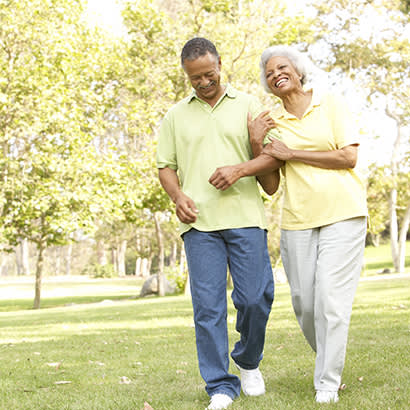
For an enhanced digital experience, read this story in the ezine.
Aging in place is “the ability to live in one’s own home and community safely, independently, and comfortably, regardless of age, income, or ability level,” according to the CDC. Aging in place is the goal for most of us, but achieving it requires preparation by the individual and support from the community — both of which often are curtailed by social inequities.
The National Poll on Healthy Aging shows 88 percent of people between the ages of 50 and 80 want to live in their own home as long as possible, but 47 percent have given little or no thought to the steps necessary to make it happen. This is understandable, as it’s hard to predict how one’s needs may change as one ages. Moreover, for many, there’s a mismatch between a fixed and limited income and the unpredictable costs of the illnesses and disabilities that often come with aging. These burdens disproportionately impact older adults with marginalized identities. For this reason, it’s critical to reach out through as many avenues as possible to connect all people with the web of accessible and inclusive programs and services that support their quality of life as they age.
Traditionally, local Area Agencies on Aging and other aging network providers are the go-to resources for guidance and concrete support for those seeking to age in place. They provide such safety-net services as food security through home-delivered and congregate meals; minor home repairs, such as installing ramps and grab bars; financial and legal counseling; Medicare consultation; and connection to other services.
But individuals may not have a longstanding relationship with these aging network specialists as they often do with their local park and recreation agencies. These agencies play an important role in supporting all to age in place through their familiar, accessible and welcoming facilities and programs.
Here are few ways they do:
Access to Physical Activity
Joyful movement is the first thing that comes to mind when many people hear the phrase, “parks and recreation.” Whether it is through an inclusive Healthy Aging in Parks Initiative group exercise class, Park Rx referral or a pickleball tournament, physical activity offers benefits for all as we age. Appropriate physical activity can prevent bone loss and chronic disease and relieve pain, as well as boost circulation, immunity, brain function and mood. Physical activity not only improves quality of life, but also is an excellent tool for reigning in healthcare costs.
Social Connection
An agency’s quarterly catalog of park and recreation programming is a guidebook to social connection for all and a warm invitation to be more active and meet new people. The fact that social connection is critical to mental health and resilience (and thus to living and aging well) is well-supported in the U.S. Surgeon General’s 2023 publication, Our Epidemic of Loneliness and Isolation.
Lifelong Learning
Lifelong learning can stimulate the brain in new ways and may even “help the brain generate new cells, developing neurological ‘plasticity’ and building up a functional reserve that provides a hedge against future cell loss,” according to a recent Harvard publication. Book clubs, mahjong lessons, low-tide beach walk field trips and civic engagement all help stimulate the brain — and, compounding the neurological benefits, are also fun, social and sometimes even physically active.
Volunteer Opportunities
Volunteering is the epitome of a win-win. Growing the volunteer base helps a park and recreation agency achieve its mission and helps volunteers age well. Research shows volunteers self-report improved health, cognition, physical function and reduced depression — all important factors in healthy aging.
Paige Denison is Director of Health, Wellness and Project Enhance: Enhance®Fitness and Enhance®Wellness at Sound Generations.

